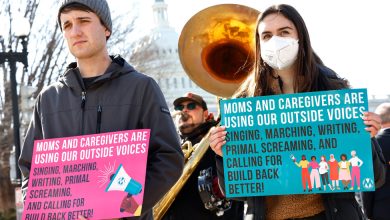Codependency Is a Toxic Myth in Addiction Recovery

With over seven million copies sold, Melody Beattie’s 1986 best seller, “Codependent No More: How to Stop Controlling Others and Start Caring for Yourself,” is considered a self-help classic and continues to sell well in a new 2022 edition.
The book popularized the idea that partners and parents of people with addiction have their own disease: codependence, which causes them to act as “enablers,” contributing to their loved ones’ continued use of substances. Like a drug, the relationship and its drama helps distract codependents from their own problems and so they resist change.
The concept has penetrated American culture. The word itself frequently appears in media and pop culture. TikTok videos on codependent relationships havehundreds of millions of views. And therapists and rehabs teach about it, as if it is a genuine psychological phenomenon.
But the influence that the concept of codependency has had on addiction treatment and policy has been toxic — and its tenets are not supported by data.
Codependence has long been part of the dominant addiction treatment philosophy in the United States, which is based on the 12 steps of Alcoholics Anonymous. In this approach, people with addiction are taught that they have a disease and that recovery requires surrender to a “higher power,” moral inventory, making amends for wrongs done and attending meetings. (Although its influence has declined slightly, around two-thirds of addiction treatment facilities are still 12-step focused.)
Lois Wilson, wife of A.A. co-founder Bill Wilson, helped found Al-Anon in 1951 to support wives and other family members of A.A. members. The idea that relatives of addicted people have their own disease first took root here. In 1976, Ms. Beattie, then an addiction counselor, created a new therapy group to help them. Before long, family members were being taught that “tough love” was the only way to manage addiction. Being kind was enabling, and for everyone to recover, parents and partners needed to back off.
As cocaine addiction rose in the 1980s, the concept of codependence offered a path to support and treatment. By the mid-1990s, treating it was an established part of therapy and residential facilities sprang up that specialized in it. A new 12-step group, Codependents Anonymous, formed in 1986.
Soon, codependence became a household word, with publications musing on whether America was codependently enabling President Bill Clinton’s sex addiction. Its ideology about using tough love to fight addiction settled into conventional wisdom.
There is little evidence, however, that codependence actually exists. The diagnosis was rejected by psychiatry’s diagnostic manual, The Diagnostic and Statistical Manual of Mental Disorders, or D.S.M. And unfortunately, what the concept actually enables is harmful treatment.
Codependence doesn’t make the grade as a psychiatric disorder for many reasons. For one, there’s no accepted way to measure it. Other diagnoses better integrate personality traits like being controlling and overly self-sacrificing that are sometimes ascribed to codependency. Moreover, feminists have long noted that the idea itself maligns caring — and by extension, women — by blaming people for their partners’ addiction and failing to recognize that women may “enable” their partners because they need their economic support.
Parents have even described being labeled sick because they refused to leave their kids homeless or have them arrested, even though both situations can worsen addiction. When someone is ill with any other disorder, relatives are not shamed for obsessively caring or rearranging their lives to help. Instead, those who abandon suffering loved ones are stigmatized. But when it comes to addiction, parents are told that their loving kindness is pathological because they somehow benefit psychologically from keeping their children addicted. Only letting them hit rock bottom will allow recovery, the thinking goes.
When one mother, Susan Ousterman, tried to comfort her son by sending him care packages in rehab, she was told by addiction counselors and others that she was “going to love him to death.” Detach and let him hit bottom, she said they insisted. Her son, Tyler Cordeiro, died of an opioid overdose in 2020 at age 24.
“The tough love narrative taught to parents was absolutely a factor in his death,” she said, describing how being rejected by his family left him hopeless and demoralized. These days, she spends her time advising other parents to think differently.
Policymakers and professionals would do well to follow her lead. Research does not support the idea that families of people with addiction have a unique syndrome that drives them to enable it. Worse, concern about enabling is frequently used to bolster counterproductive tactics like arrest and incarceration, and stymie compassionate, proven harm-reduction strategies like medication treatment and syringe service programs.
Even the idea of “enabling” is poorly defined. Haranguing people to quit is viewed as enabling, because it sustains a dysfunctional cycle: He nags, so she drinks; she drinks, so he nags. But being supportive, particularly financially, is also suspect because it might prevent someone from “bottoming out.” The only way codependent people can be sure they aren’t enabling is by leaving, proponents argue.
“It just pathologizes relationships when what we need to be doing is helping people see the power in our relationships,” said Carrie Wilkens, a psychologist and co-author of a forthcoming book on how families can compassionately promote recovery. “People do not need to hit bottom to change. People change at all of the steps before they get to bottom, and bottom for many means death.”
Psychologists now recognize that needing others is normal: Human brains and bodies rely on social contact to soothe stress and we become dysfunctional without warm relationships. Basically, everyone is codependent. And the last thing atomized America needs is more reinforcement of the idea that individuals alone determine their happiness.
The main problem in addiction isn’t needing someone or some drug to function; many people rely on medications and relationships without being addicted. Instead, the core of addiction is compulsive behavior regardless of harm, which is why the D.S.M. no longer labels addiction as “dependence.”
The success of strategies commonly seen as enabling drug use by the state — providing clean needles, safe spaces to take drugs, housing that doesn’t require abstinence, and even prescribing heroin — also undermines its central claim. Research shows that people who engage with these types of programs are often as or more likely to seek abstinence or more traditional medications, or are otherwise healthier, compared with those who don’t.
Research also shows that people with resources and social connections are more likely to recover from addiction than those who are at the bottom and have nothing.
None of this is to say that people with addiction can’t have destructive relationships or that being too dependent can’t be problematic. But such issues are not unique to addiction.
Families should not tolerate stealing or other abusive behavior. People need to protect themselves and other children, and that may involve cutting contact with addicted loved ones. Setting firm boundaries can keep relationships healthy. But it shouldn’t be done based on the false idea that getting tough is the only way to spur recovery.
Dr. Wilkens and others who use evidence-based therapies — like CRAFT and motivational enhancement, which use gentler tactics and do not pathologize caring relationships — want families to know that there is hope. “Studies show time and again that families are the biggest reason why people want to change and do change over time,” she said.
Maia Szalavitz is a contributing Opinion writer and the author, most recently, of “Undoing Drugs: The Untold Story of Harm Reduction and the Future of Addiction.”
The Times is committed to publishing a diversity of letters to the editor. We’d like to hear what you think about this or any of our articles. Here are some tips. And here’s our email: [email protected].
Follow The New York Times Opinion section on Facebook, Twitter (@NYTopinion) and Instagram.





